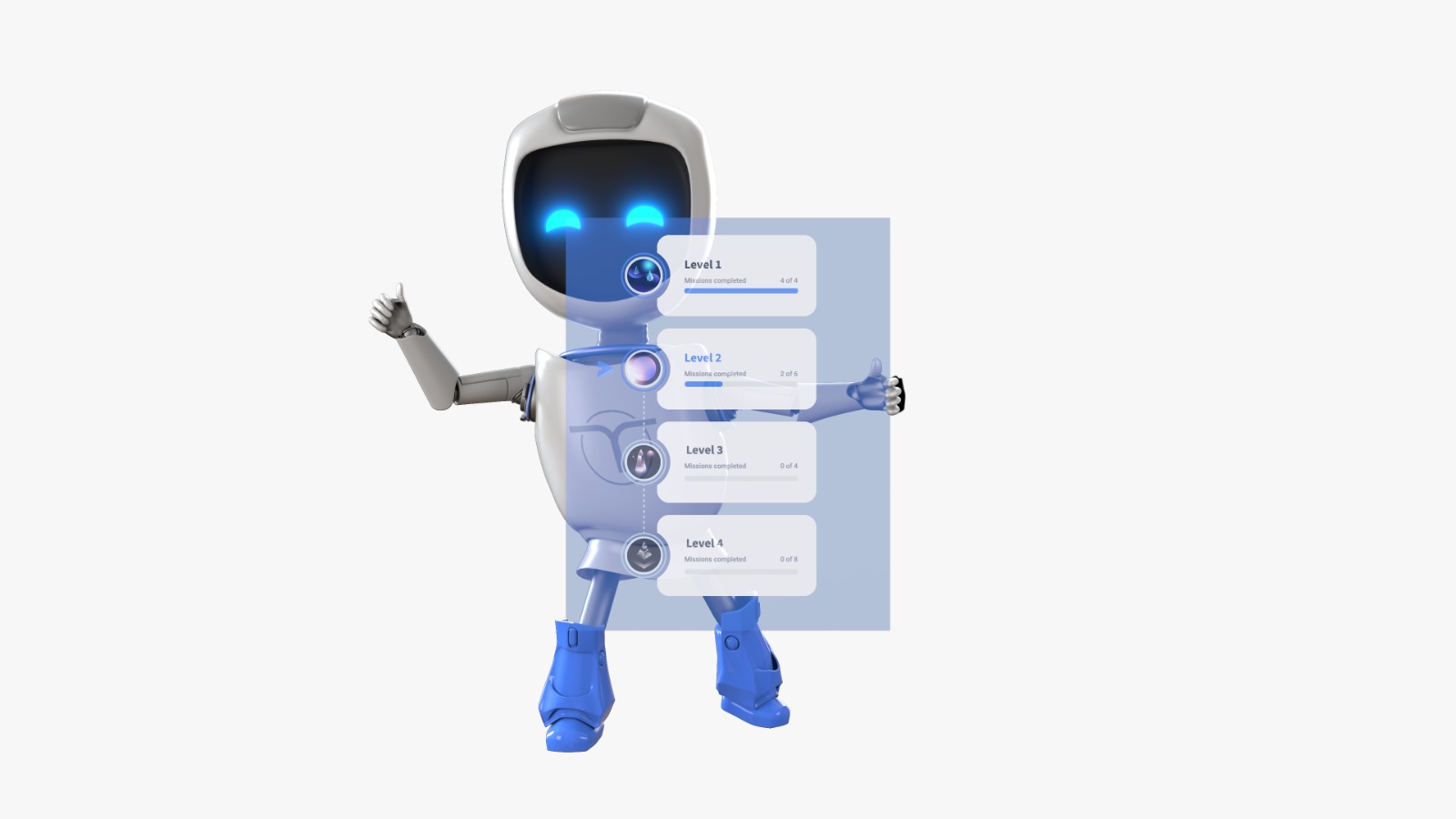Digital learning has evolved by leaps and bounds in the last decade. More teams than ever are turning away from conventional training methods and updating their old content – and for good reason.
As technology evolves, e-learning has followed, leveraging learning analytics to help instructors track, measure, and visualize learners’ progress.
Learning analytics are largely powered by artificial intelligence and are immensely beneficial in transforming old training content into something more valuable. AI-powered analytics provides data about your training content and helps learners engage with the material by creating personalized experiences and opportunities for growth.
Introducing AI capabilities into your training methods is an excellent way to transform and update old training content, identify the strengths and weaknesses of individual trainees, and save you a lot of time and money.
If you’re looking to develop a new microlearning curriculum that’s more in tune with the times, there’s no better place to look than AI. Not convinced? Here are some of the most valuable benefits of embracing artificial intelligence in employee learning materials:
1. Help Trainers Review Responses
AI-powered tools analyze large amounts of data to identify patterns and trends in training content – much faster and more accurately than a human ever could.
With AI, it’s now possible to automate the entire process of reviewing responses to your microlearning training program. Whether this involves the grading process or providing personalized feedback to learners, it helps trainees identify areas where they need more support.
For example, an AI-powered system can analyze all written responses to a training quiz or microlearning video almost instantly. This saves a lot of time for trainers who would otherwise need to manually review responses and provide individual feedback. This time is better spent on creating more microlearning content.
AI can also be leveraged in developing microlearning content. Manually developing a high-quality complex training module takes a lot of time and human resources. According to a survey conducted in 2017, it takes an average of 42 hours to create one hour of passive training and a staggering 142 hours to develop one hour of complex learning. AI can cut this down significantly.
In terms of modernizing and streamlining legacy content, AI can also provide new avenues. For example, transforming old Powerpoint presentations into interactive digital modules is usually a long and cumbersome process. It requires authoring tools, apart from the actual creation of new and fresh interactive content.
With AI, it’s now possible to transform legacy content more efficiently. This technology can be used to create content in fun, engaging ways, such as rewarding trainees who complete tasks or achieve specific goals.
What’s more? It’s easy to develop this content in multiple languages that learners are proficient in using. With the pressure taken off reviewers to individually assess responses, this is an empowering tool for global companies working with a number of remote employees.
2. Provide Automated Assessments
Transforming traditional content to digital formats requires a great deal of software expertise and continuous innovation in the medium in which the training is delivered. Before trainers start worrying about whether learners are responding to the content, it’s important to know if the curriculum is functioning as intended in its new digital space.
To get feedback on this in software terms, trainers need to carry out continuous automated tests or assessments. This refers to the use of tools and scripts to check your training methods for defects or errors. This would require a large amount of expertise and manpower if done manually.
Fortunately, of the many uses of AI, the latest trend in quality assurance is test automation. AI-powered tools can mimic real-world user behavior to ensure your microlearning training content works as intended and meets your organization’s quality standards.
By using automated testing tools that can assess a large number of cases accurately, AI can generate reports and provide insights into the performance and reliability of any software that you are using for digital learning modules. This will save time for your training and IT teams while ensuring that all desired quality standards are met.
3. Give Necessary Feedback
Training content can always be improved. Older or outdated modules often have a more traditional method of delivery and must be refreshed. As you begin to transform your old training content with AI and personalize it for trainees, you need to create specific, detailed feedback for improvement.
Usually, this would involve a lot of tedious back and forth between several reviewers. With AI-powered tools, it’s a lot easier.
When relying on an artificial intelligence curriculum, you can quickly get feedback on several training elements, including, but not exclusive to:
- User engagement: To understand how engaging your training content is.
- Learning outcomes: To assess whether your training methods work.
- Performance improvement: To assess if the training helps trainees grow professionally.
- Overall effectiveness: To identify what works best and what doesn’t.
Need Help Revamping Your Old Content?
The most common fear associated with artificial intelligence is that it’s coming for our jobs. The truth is that right now, AI is simply making complex tasks easier to complete and streamlining the way we work – including how we meet training needs.
In terms of winning training programs, relying on an artificial intelligence curriculum minimizes tedious, manual work and gives us more time for more creative microlearning content.
Companies like Code of Talent have developed powerful AI tools to take training content to the next level with very little effort. When transforming old training content, CoT can help make learning more fun and bite-sized, change the behaviors of your trainees, drive professional development, and track the team’s progress in real-time.
Browse the Code of Talent website for a free demo and transform your outdated training modules into something fresh and modern that your trainees will learn from and engage with.





